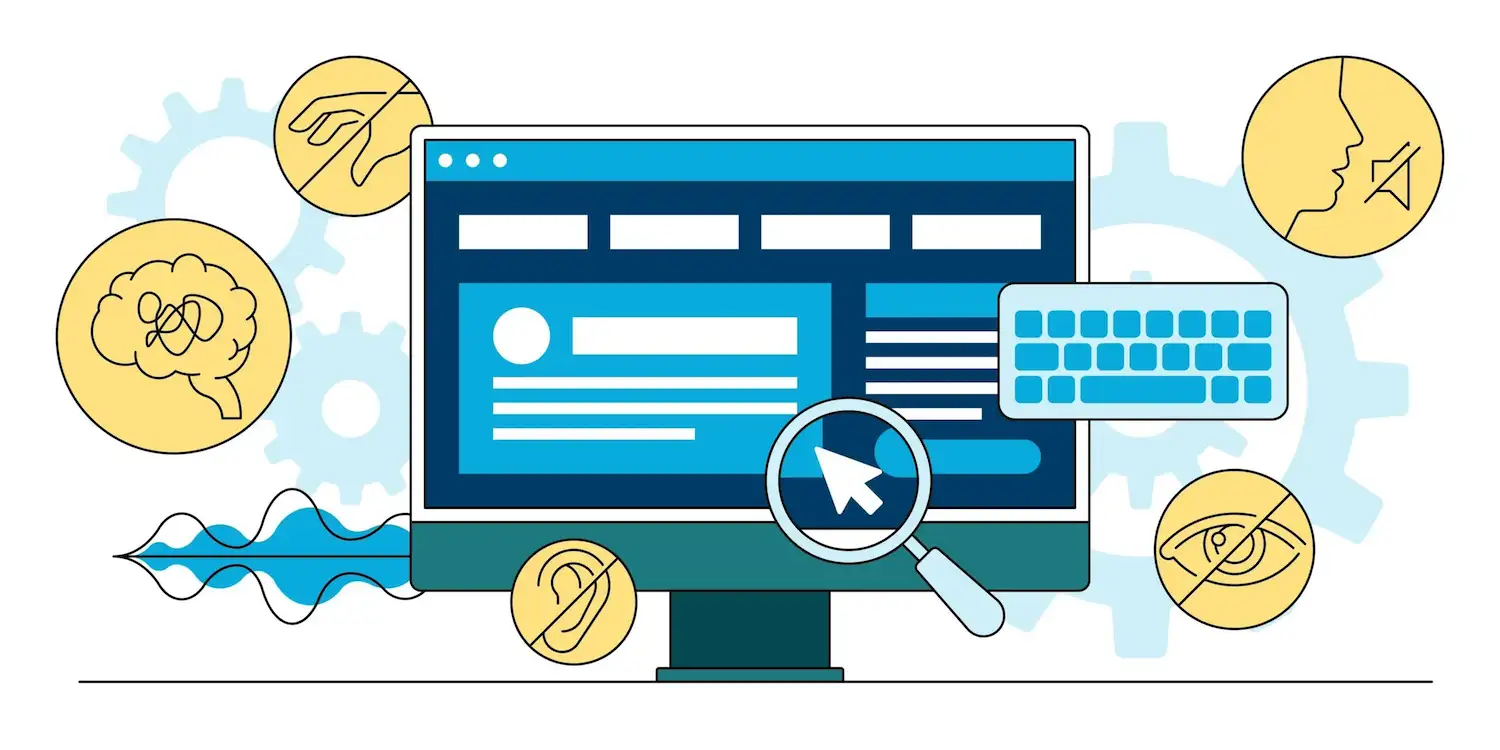Pixel Perfect Equity: Creating Web Accessibility for All Users
In 2023, website accessibility has gained significant importance. It’s essential for websites to be inclusive and accessible to all users, including those with various disabilities. This accessibility ensures that everyone can access the same information and services available on the internet, encompassing news articles, online shopping, banking, government services, and much more.
By prioritising website accessibility, we are guaranteeing that everyone has an equal opportunity to access online content.
Indeed, the impact is substantial, affecting over 1 billion people globally who may encounter difficulties accessing websites lacking accessibility features. These challenges span various disabilities, encompassing physical, sensory, cognitive, and intellectual impairments.

Given this significant portion of the population, it is of utmost importance that websites prioritise inclusive and accessible design to ensure equitable access for all individuals.
Prioritising website accessibility is not only a matter of social responsibility but also a savvy business move. Here are some key reasons why businesses should consider accessibility:
Wider Audience Reach: Accessible websites enable businesses to tap into a broader and often overlooked market, potentially increasing revenue and growth. Improved accessibility enhances engagement, boosts sales, and enhances customer satisfaction by making the site easier to navigate for all users.
Preventing Revenue Loss: In 2021, e-commerce retailers lost an estimated $828 million during the holiday season due to inaccessible websites. Ensuring accessibility can prevent such revenue losses.
Reputation and Brand Image: Accessibility efforts can positively impact a company’s reputation and brand image. Demonstrating a commitment to inclusivity and social responsibility can enhance your brand’s perception.
SEO Benefits: Accessible websites tend to perform better in search engine rankings, potentially boosting your online visibility and attracting more organic traffic.
Legal Compliance: Focusing on accessibility helps ensure compliance with laws and regulations like the Americans with Disabilities Act (ADA), the Rehabilitation Act, and the European Accessibility Act (EAA). These laws require businesses to make reasonable accommodations for individuals with disabilities, and non-compliance can lead to legal consequences, including lawsuits.
Incorporating accessibility into your website design is not only the right thing to do but also a strategic move that can benefit your business in multiple ways.
Web Design Inclusivity

Inclusive design is a win-win for all users, not just those with disabilities. An accessible website is more user-friendly, providing an improved experience for everyone who visits. The benefits of inclusive design extend to:
Ease of Navigation: Accessible websites are typically easier to navigate. Clear and organised content benefits all users, making it simpler to find information or complete tasks.
Enhanced User Experience: A well-designed accessible website is more pleasant to use. This positive experience can lead to increased user satisfaction, longer time spent on the site, and higher engagement.
Improved Conversions: When users can easily access and interact with your content, it can lead to higher conversion rates. Whether it’s making a purchase, signing up for a newsletter, or taking any desired action, accessibility can boost conversions.
Expanded Audience: Inclusive design widens your potential audience, encompassing people with various needs and preferences. By catering to diverse user groups, you can attract a more extensive and diverse user base.
Future-Proofing: Embracing accessibility early on future-proofs your website. As technology and user expectations evolve, having an accessible foundation makes it easier to adapt and stay relevant.
Inclusive design isn’t just about compliance or catering to a specific group—it’s about creating a more user-friendly and engaging online experience for everyone who visits your website.
Final Thoughts

Creating websites with accessibility in mind is not only the right thing to do but also a rewarding practise. By following accessibility guidelines, adopting inclusive design principles, and leveraging existing resources and technologies, we can build websites that cater to all users, delivering a delightful experience regardless of their abilities or needs.
Remember that enhancing website accessibility is an ongoing journey. It’s essential to stay informed about technological advancements and emerging issues so you can adjust your methods accordingly. Regular accessibility testing, seeking input from individuals with disabilities, and staying up-to-date with industry standards are critical steps.
Prioritising web accessibility is crucial to ensuring that everyone can access the vast array of resources and opportunities available online. Let’s collaborate to create a web that’s beneficial for everyone, embracing the potential of web development.
Together, we can transform the internet into a more vibrant, inclusive, and accessible space for all.





